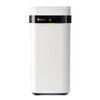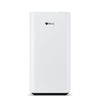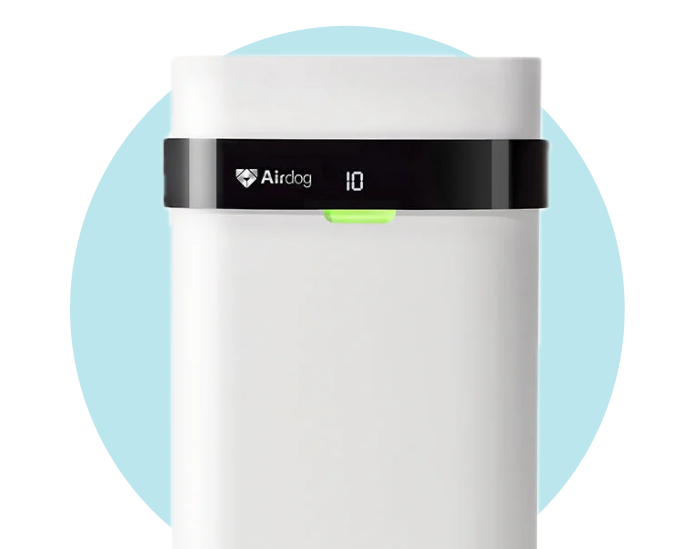Did you know that mold can grow in any home, regardless of cleanliness or age? This fact surprises many, especially those diligent about keeping their living spaces pristine. The truth is, mold doesn't discriminate; it finds its way into homes through the air we breathe and thrives in moist environments. By referencing the US EPA's guidelines on reducing humidity and increasing ventilation, we'll uncover strategies to prevent mold from becoming an uninvited guest in your home.
Introduction - Understanding Mold Growth in Homes
Mold thrives in moist environments and can establish itself in various areas around the home. Recognizing the factors that contribute to mold growth is crucial for maintaining a healthy living space and ensuring the well-being of all inhabitants. Here are the key elements that facilitate mold proliferation:
-
Humidity: High levels of humidity provide the perfect breeding ground for mold. It's essential to maintain indoor humidity levels below 60%, ideally between 30% and 50%, to deter mold growth.
-
Water Leaks: Leaking pipes, roofs, or windows can introduce excess moisture into the home, creating ideal conditions for mold to flourish. Promptly addressing leaks is critical in mold prevention.
-
Lack of Ventilation: Inadequate ventilation traps moist air inside, escalating humidity levels, and encouraging mold growth. Ensuring proper airflow through the use of fans and opening windows can significantly reduce mold risks.
The US EPA emphasizes reducing indoor humidity and enhancing ventilation as key strategies in preventing mold growth. By adhering to these guidelines, homeowners can take proactive steps to protect their homes and health from the adverse effects of mold.
Common Areas for Mold Growth and Why
Mold's preference for damp, poorly ventilated spaces turns certain areas in homes into mold hotspots. Understanding why these locations are susceptible and how daily activities contribute to mold growth is key to prevention. Here's a closer look at common areas where mold thrives and the reasons behind it.
Bathrooms
Bathrooms are notorious for mold growth due to the constant presence of moisture from showers, baths, and sinks.
-
High Humidity Levels: The steam from hot showers and baths significantly increases bathroom humidity. Without adequate ventilation, this moisture-laden air has nowhere to escape, creating an ideal environment for mold.
-
Lack of Ventilation: Many bathrooms suffer from insufficient ventilation, exacerbating moisture accumulation on walls and ceilings.
-
Preventive Measures: Running an exhaust fan during and after showers or baths and keeping windows open when possible helps reduce humidity levels. Additionally, wiping down shower walls and floors can minimize moisture.
Kitchens
Kitchens are another prime location for mold due to cooking, washing dishes, and other activities that introduce moisture into the air.
-
Cooking and Washing: Both release steam, raising the room's humidity. Without proper ventilation, this moisture can settle on walls, windows, and other surfaces.
-
Refrigerator Drip Pans: Often overlooked, these can harbor mold if not cleaned regularly.
-
Preventive Measures: Using exhaust fans, keeping the kitchen well-ventilated, and regularly cleaning areas prone to moisture accumulation, like the refrigerator drip pan, can prevent mold growth.
Basements
Basements are prone to mold growth because they are often poorly ventilated and susceptible to dampness from the ground.
-
High Humidity and Dampness: Basements can naturally have higher humidity levels due to their below-ground location. Water leaks or seepage through foundations add to the problem.
-
Cold Surfaces: Cold water pipes and concrete floors can cause condensation, a precursor to mold.
-
Preventive Measures: Insulating pipes, using a dehumidifier, and ensuring gutters and downspouts direct water away from the foundation can help keep basements dry.
Attics
Attics can become moldy due to poor ventilation and roof leaks.
-
Poor Ventilation: Without adequate airflow, attics can trap moisture, especially in hot or humid weather.
-
Roof Leaks: Water intrusion from a leaking roof provides a moisture source that mold spores thrive on.
-
Preventive Measures: Ensuring proper attic ventilation and promptly repairing any roof leaks are critical steps to prevent mold in attics.
In all these areas, the EPA's advice to cover cold surfaces like water pipes with insulation to prevent condensation is a vital preventive measure. This not only reduces the risk of mold growth but also helps maintain more consistent indoor temperatures, reducing energy costs.
Prevention Strategies for a Mold-Free Home
Creating a mold-free home requires a proactive approach, focusing on maintaining a dry, well-ventilated environment. The strategies outlined here draw from expert advice, including insights from extension.umn.edu, to help you safeguard your living spaces against mold infestation.
Proper Ventilation
Ventilation plays a pivotal role in mold prevention, particularly in areas of the home prone to high humidity such as the kitchen, bathroom, and laundry room.
-
Exhaust Fans: Install and use exhaust fans in bathrooms and kitchens to expel moist air directly outside, not into the attic or another indoor space.
-
Air Circulation: Regular use of ceiling or standing fans enhances air movement within the home, preventing the stagnation that fosters mold growth.
-
Open Windows: Whenever weather permits, open windows to allow fresh air to circulate and dilute indoor humidity.
-
Air Purifiers: Certain air purifier technology (like Airdog’s TPA® Technology) has the capability of capturing and destroying harmful air particles as small as 0.0146 microns, capturing harmful viruses like influenza, rhinovirus, smog and other ultrafine particulates. Removing this kind of bacteria can help reduce the impact of mold and prevent its spread in the first place.
Humidity Control
Controlling indoor humidity is crucial to preventing mold. According to extension.umn.edu, maintaining indoor humidity levels between 30% and 50% is ideal.
-
Dehumidifiers: Use dehumidifiers in damp areas, such as basements, to keep humidity levels in check.
-
Air Conditioners: Operate air conditioning units during humid seasons, as they reduce moisture in the air while cooling your home.
-
Monitor Humidity: Invest in a hygrometer to regularly monitor the relative humidity in your home, adjusting your humidity control methods as necessary.
Fixing Leaks Promptly
Water leaks are a primary contributor to mold growth, providing the moisture that mold spores need to thrive.
-
Regular Inspection: Regularly inspect plumbing, roofs, windows, and doors for signs of leaks and repair them immediately.
-
Dry Wet Areas: Dry any wet areas within 24-48 hours to prevent mold growth. This includes after leaks, spills, floods, or condensation.
-
Gutter Maintenance: Keep gutters and downspouts clean and in good repair to prevent water from accumulating near the foundation.
Insulating Cold Surfaces
Condensation on cold surfaces can lead to mold growth. Insulating these surfaces helps prevent the formation of condensation.
-
Pipes: Wrap cold water pipes with insulation to prevent condensation.
-
Walls and Windows: Ensure that walls, especially those that are external, and windows are properly insulated to reduce the risk of condensation and subsequent mold growth.
-
Attics and Basements: Pay special attention to insulating attics and basements, as these areas are prone to temperature differences that can lead to condensation.
By integrating these strategies into your home maintenance routine, you can significantly reduce the risk of mold growth.
Health Impacts of Mold Exposure
Understanding the breadth of health issues associated with mold exposure is paramount for homeowners, especially those with families, pets, or a keen interest in maintaining a healthy, environmentally friendly living space.
Allergic Reactions and Respiratory Issues
The presence of mold can lead to a spectrum of allergic reactions and respiratory problems for the people living in affected homes:
-
Allergic Responses: Many individuals experience allergic reactions to mold spores, which can include sneezing, runny nose, red eyes, and skin rash. Mold allergies can severely impact one's quality of life, especially if symptoms become chronic.
-
Asthma Triggers: For people with asthma, mold can serve as a significant trigger, exacerbating symptoms and potentially leading to more frequent and severe asthma attacks.
-
Respiratory Infections: Prolonged exposure to mold has been linked to upper respiratory tract symptoms, coughing, and wheezing in otherwise healthy individuals. It can worsen the health conditions of those with pre-existing respiratory issues.
Severe Health Risks for Immune-compromised Individuals
For individuals with compromised immune systems, the stakes are even higher:
-
Invasive Infections: While rare, mold can cause invasive infections in people with weakened immune systems, potentially leading to serious health outcomes.
-
Chronic Conditions: Continuous exposure to mold can contribute to the development of chronic health issues in immune-compromised individuals, requiring long-term medical attention and impacting overall well-being.
Supporting Insights from Health Experts
Research and insights from health experts underscore the necessity of mold prevention as a health priority:
-
Increased Vulnerability: Children, the elderly, and those with chronic respiratory conditions or immune suppression are particularly vulnerable to the adverse effects of mold exposure.
-
Connection to Indoor Air Quality: Studies highlight a direct correlation between indoor air quality and health, indicating that homes with mold problems often have compromised air quality, further affecting residents' health.
Reducing humidity, ensuring proper ventilation, and promptly addressing water leaks represent tangible steps toward safeguarding one's health against the potential risks posed by mold exposure.
Innovative Tools and Solutions for Mold Detection and Removal
Leveraging modern technology and innovative solutions can make a significant difference. Among these advancements, the Mold Locator Test Kit, as highlighted in a podcast with Brian Karr, represents a pivotal tool in early mold detection and management.
The Role of Mold Detection Kits
-
Early Detection: The Mold Locator Test Kit enables homeowners to identify mold presence before it becomes visible. Early detection is crucial for minimizing health risks and structural damage.
-
Customized Solutions: Unlike generic solutions, this kit offers a tailored approach to mold testing, providing specific insights into the types and concentrations of mold present in the home.
-
Expert Consultation: Many kits come with the option for professional consultation, offering homeowners guidance on interpreting results and next steps.
Professional Remediation Services
When mold infestations surpass the capabilities of DIY efforts, seeking professional remediation services becomes essential:
-
Comprehensive Assessment: Professionals conduct thorough inspections, identifying all affected areas, including those not immediately obvious to homeowners.
-
Advanced Techniques: Remediation experts utilize advanced techniques and tools to safely and effectively remove mold, surpassing the efficacy of typical household cleaning methods.
-
Preventative Measures: Beyond removal, professionals can provide recommendations for preventing future growth, addressing the root causes of mold issues.
DIY Cleaning Tips for Minor Mold Issues
For minor mold issues, certain DIY strategies can prove effective:
-
Ventilation and Dryness: Ensuring adequate ventilation and keeping areas dry are fundamental steps in preventing mold growth.
-
Cleaning Solutions: A mixture of water and mild detergent often suffices for cleaning small mold patches. For non-porous surfaces, diluted bleach solutions may be used cautiously.
-
Protective Gear: When cleaning mold, wearing protective gear such as gloves and masks is crucial to avoid direct exposure to harmful spores.
When to Call in Experts
Recognizing when to seek professional help is key to effective mold management:
-
Extensive Infestations: Large or deeply entrenched mold growths require professional removal techniques.
-
Health Risks: Homes with vulnerable individuals, such as those with respiratory conditions or immune suppression, should prioritize professional mold remediation to safeguard health.
-
Recurring Mold: If mold returns after DIY cleaning, this suggests an underlying issue that likely needs expert assessment and intervention.
These strategies, combined with a proactive stance on moisture control and ventilation, form a comprehensive approach to mold management, ensuring a healthier living environment for all occupants.
The Importance of Mold Prevention and Early Detection
Adopting the prevention strategies outlined above not only fortifies your home against mold but also cultivates an environment conducive to health and happiness. Vigilance in detecting early signs of mold growth, combined with a commitment to maintaining dry, well-ventilated living spaces, ensures that your home remains a sanctuary for all who dwell within.








